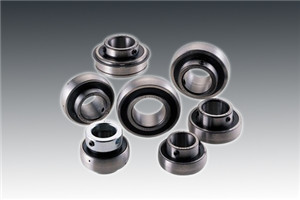Y-bearings models
Feature
Total 1 Page 2 records

Features:
Y-bearings, which are usually referred to as insert bearings, are based on sealed deep groove ball bearings in the 62 and 63 series, but have a convex outer ring and in most cases an extended inner ring with a certain locking device enabling quick and easy mounting onto the shaft.
Y-bearings are available singly or as units. Y-bearing units consist of a housing, bearing and seal that is preassembled and greased at the factory. These ready-to-mount units can accommodate moderate initial misalignment but normally do not enable axial displacement of the shaft.
Y-bearings and Y-bearing units offer a simple, cost-effective solution that can provide a number of benefits.
Product range features for Y-bearings:
1) Designed for quick, easy and safe mounting
2) Sealed, greased and ready to mount
3) Multiple sealing solutions available
4) Virtually maintenance-free variants available
5) Available in different designs, materials and sizes
6) Standard and food grade greases available
7) In accordance with ISO
User benefits for Y-bearings:
1) Increased productivity
2) Reduced maintenance cost
3) Reduced environmental impact
4) Long bearing service life
5) Reduced noise and vibration levels
6) Quick, easy and safe to replace
Applications for Y-bearings:
Because of their versatility, and cost effectiveness, Y-bearings are typically found in the following applications:
Agricultural machinery
Food and beverage processing and packaging
Conveyor systems
Material handling systems
Textile equipment
Industrial fans
Special machinery (e.g. car wash systems, gym equipment, go-karts)
Y-bearings can be divided into below series:
UC200 series (Normal duty )
UC300 series ( Heavy duty )
UEL series
UK+H2300 series
SA/UE200 series
SB/MT200 series
SC200 series
Parameter:
| Id (mm) | Inside diameter | Tolerance of inner race width Bi | Tolerance in radial run-out | |||||||||
|---|---|---|---|---|---|---|---|---|---|---|---|---|
| UC,HC,UR,SER,SA,SB | SC | |||||||||||
| Tolerance of dm | Tolerance of d | Tolerance of dm | Tolerance of d | |||||||||
| over | incl. | max | min | max | min | max | min | max | min | max | min | max |
| 10 | 18 | +15 | 0 | +19 | -4 | 0 | -8 | +3 | -11 | 0 | -120 | 15 |
| 18 | 31.75 | +18 | 0 | +22 | -4 | 0 | -10 | +3 | -13 | 0 | -120 | 18 |
| 31.75 | 50.8 | +21 | 0 | +25 | -5 | 0 | -12 | +3 | -15 | 0 | -120 | 20 |
| 50.8 | 80 | +24 | 0 | +28 | -6 | - | - | - | - | 0 | -150 | 25 |
| 80 | 120 | +28 | 0 | +32 | -7 | - | - | - | - | 0 | -200 | 30 |
| 120 | 180 | +33 | 0 | +37 | -8 | - | - | - | - | 0 | -250 | 35 |
Remark: dm is an average diameter calculated from two point measurement of the minimum and maximum diameter.





